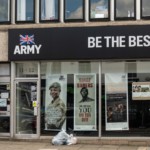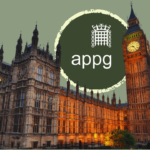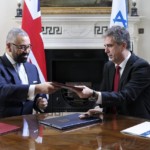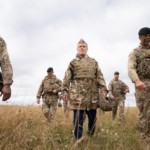RAF100: A Short Counterhistory of Britain’s Air Force
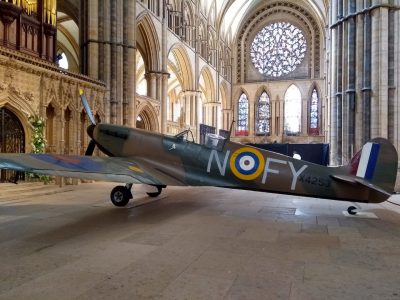
There were two British military centenaries in 2018. One, in November, commemorated the end of the First World War. The other, officially in April but marked by events across the country all year, recalled the 100 years since the founding of Britain’s Royal Air Force (RAF). Implicit to this other centenary is the recognition of a key development in modern war-fighting which has come to play a key role, almost without exception, in wars fought since 1918: air power.
The RAF is the youngest of the UK’s three military services, having been formed from the British Army and Royal Navy as the bloody deadlock of the Great War drove the search for new ways of winning on the battlefield. Like the British Army and Royal Navy, the RAF has distinct sense of itself and occupies a unique place in the public consciousness. A place where technical skill and flexibility is favoured over the tough top-down discipline of the other parts of the military and where there is still space for a certain amount of dash and flair.
While accounted a critical voice within defence, former RAF officer, scholar and author Frank Ledwidge, whose 2018 book on air warfare was timed for the centenary, echoed this sentiment when he described the branch as being ‘less rigorous, less rigid, and allowing a little bit more for questioning than the other two services.’
He added that ‘flying still has a certain amount of glamour about it and I think the RAF still has a certain touch of that and it is quite conscious of that as well, and rightly so.’
The case is regularly made that the RAF has been on the whole a force for good, with particular attention paid to its role in fighting fascism in the Second World War. But, as with all the UK military services, there is another side to the RAF.
It is of particular importance to the ForcesWatch mission that people are equipped to take a nuanced view and understand that while the RAF itself tends to lead with the sepia tones of the Battle of Britain, and leans heavily on the kind of mystique posited by Ledwidge, there is more to be said about the service. This is especially important for people who might join the services but also for the rest of the population.
RAF100 timeline
In the years after the First World War the RAF quickly found a role as an airborne imperial police force, taking part in a series of operations in support of colonial aims including quelling local resistance in locations as diverse as Somaliland, Mesopotamia, Waziristan and Afghanistan.
This policing role is one the air force has reprised many times since those formative years and continues to carry out today in some of the exact same locations. The middle parts of the RAF century were marked by a different approach to air power, most obviously massive bombing operations against German cities, and then, during the post-war stand-off with the Soviet Union, as a force ready to deliver nuclear devastation.
Third Anglo-Afghan War, 1919
In its first two Afghan wars Britain had rather fared poorly. By the third it could bring to bear air-power developed during the recently concluded war in Europe. This short conflict was won in part due to the psychological effect on the local population of a crude long air raid which saw four bombs dropped on the royal palace in Kabul. The tactics employed would also lend weight to later arguments, put to the government of the day by the RAF’s first commander Major General Trenchard, for the usefulness of aerial warfare.
The ‘Mad Mullah’, 1920
In 1920 the British fought a small war in Somaliland (modern day Somalia) against a religious nationalist leader named Mohammed Abdullah Hassan, the so-called Mad Mullah, which foreshadowed to some extent the modern use of local troops overseen by British officers and air power in Afghanistan and elsewhere. The British broke his Dervish movement by luring him, his top commanders and his family to an exposed location under the pretext of an official visit before bombing them from the air. Most of Hassan’s family were killed. He and other survivors were pursued from the air. He died the following year, and with him the resistance movement.
Mesopotamia, 1921
The RAF has been bombing Iraq on and off for nearly a century ever since it became apparent to Winston Churchill, then Colonial Secretary, that the region would need to be policed following an outbreak of insurgency in 1920. The future prime minister recalled the RAF’s effort in Somaliland under the service’s first commander Hugh Trenchard and decided that of the three services the air force had proposed a better solution and would be given overall command of theatre. In 1924 Churchill went as far as to urge Trenchard to use mustard gas to suppress rebels although in the end shortages of the chemical agent meant that conventional bombing was used.
Pink’s War, Waziristan, 1925
Named after the senior officer in charge Wing Commander Richard Pink, this was another small war fought in what is today Pakistan against local tribesman. It was also the RAF’s first independent operation. Again the purported successes of the Somaliland operation were cited to make the case to use the air force to deal with tribes who persisted in attacking British bases along the North-West Frontier. The operation saw the strafing of tribal ‘strongholds’ combined with the dropping of propaganda leaflets. The latter tactic would become a common psychological tactic in subsequent conflicts. The combination of soft power and hard force brought the operation to a close with the tribal leaders asking for peace after only 50 days.
‘The phosphorus clung to the bodies of the injured, turning them into human torches, but it was impossible to extinguish the flames and their screaming was added to the other cries.’ Victor Gregg
World War Two: Razing cities
The development of British WW2 air-power strategy was a result of many factors but was in that conflict that air power found its full industrial expression under RAF chief Arthur ‘Bomber’ Harris, a veteran of earlier colonial policing operations. Technology had by that time allowed enough aircraft to be produced with the range and lifting capacity for the mass bombing of cities with civilians as their stated target.
This was carried out at Harris’ direction despite some opposition from other commanders within the RAF on the grounds that mass civilian casualties should be avoided. The ethics of the choice to carpet bomb civilians in the context of total war are still debated but witness accounts testify to the incendiary horror.
During the bombing of Dresden alone, an operation to which the RAF contributed over 700 aircraft, it is estimated that between 25,000 and 35,000 people died. Most of these were civilians. One survivor, a captured British soldier who was made to work in a rescue party, described how after cracking open one 1,000-person air raid shelter all that was found was green-brown liquid which clung to bones. The occupants has been liquidised by the heat. The soldier, Victor Gregg, described the hellish raid in vivid detail: ‘The phosphorus clung to the bodies of the injured, turning them into human torches, but it was impossible to extinguish the flames and their screaming was added to the other cries.’
The RAF treated dozens of other German cities in much the same way over the course of the war.
The End of Empire and the Cold War
In the wake of WW2, as the Cold War took hold, the RAF returned to colonial policing. This time, however, the empire was drawing down. While the air force operated in many colonies and protectorates, one of the most brutal wars was that in Malaya. Alongside the colonial draw-down the RAF played a key role in the policy of Mutually Assured Destruction (MAD), the hair-trigger doctrine of nuclear stand-off.
From 1948 to 1960 the British government waged a counterinsurgency war in Malaya. Rhetorically this was against communists, the reality is more nuanced and closely connected to the commercial interests of the Dunlop tyre firm which relied on the Malayan rubber industry to make products. The conflict had many unique aspects and in particular was seen as the source of some of the doctrine later used in the Vietnam war. This includes the use of the chemical defoliant, which would become famous as Agent Orange. Sprayed from the air to strip jungle canopies of leaves and deny insurgents cover, the chemical has since been shown to be a potent carcinogen and the cause of decades of birth defects.
By the end of the Cold War the UK’s arsenal was largely deployed on Polaris submarines but this was not always the case. Up until intelligence revealed that Russian air defences were too strong for UK aircraft to deliver nuclear payloads the job belonged to the RAF’s “V Force”, styled after the Vulcan, Valiant and Victor bombers in service at the time.
Up until that shift toward a submarine-launched deterrent the unit’s mission was to carry deadly nuclear missiles deep into Soviet territory to attack major targets – civil and military – in line with the UK-US policy of the day.
The Gulf War
After the fall of the Soviet Union the RAF’s first major outing was the Gulf War from 1990-1991. The RAF took a full role in the war and again returned to an air policing role to enforce the crippling post-war sanctions placed on Iraq during the 1990s. As is often the case with sanctions their effects were felt far more keenly by ordinary Iraqis then by the regime they were meant to punish, serving to entrench Saddam’s power rather than loosen his grip on the country.
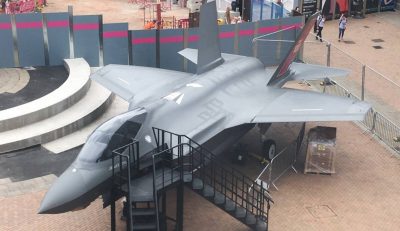
An F35 stealth fighter jet on show in Victoria Square, Birmingham in August 2018 as part of the RAF100 aircraft tour
9/11 wars
In the immediate wake of 9/11 the RAF took part in the allied assault on the ruling Taliban regime in Afghanistan, at the time one of the poorest countries in the world and one teetering on the edge of famine. The RAF role in the subsequent US-led occupation continues to this day despite an official end to combat operations in 2014, and includes a period of high intensity operations centred on Helmand province in the south of the country from 2006 until the drawdown.
In some respects the operation, in support of UK, allied and indigenous troops, has been a return to some of the RAF’s first colonial policing operations – also carried out in central Asia – in which it brought high-tech weapon systems to bear against relatively lightly armed and elusive opponents often at deadly cost to civilians. Afghanistan, like Iraq, also became a laboratory for the UK’s adoption of drone technology as both a killing and surveillance tool.
Soon after the RAF returned once again to the skies over Iraq, taking part in the US-led bombing campaign which would eventually dislodge the Saddam Hussein regime but at substantial cost not only to Iraq but the entire region. The controversies around the war, in particular it’s legality, still shape UK and world politics.
‘Loading high explosive Paveway bombs onto the RAF’s latest in-service jet knowing they were going to be dropped on people who posed no threat to me or my country was the final straw.’ Daniel Lenham, 2015
Libya
In 2011 the RAF went into action over Libya, again as part of a US-led coalition, albeit one fronted by France’s President Sarkozy and with a number of Arab allies in tow. Their aim was to dislodge the regime of Colonel Muammar Gaddafi under the banner of a humanitarian intervention. Apart from special forces and local militias the operation was strictly an air war. Seven years on Libya is something approaching a failed state, riddled with corruption, home to a North African offshoot of the so-called Islamic State and a hub for people smuggling and even, horrifyingly, slave markets.
In a 2015 article for the Independent an airman named Daniel Lenham, who served during the operation, explained why he threw his medals down outside Downing Street in protest. The operation, he argued, had ‘left Libya in flames, crystallised my belief that what we were doing militarily was wrong.’ ‘Loading high explosive Paveway bombs onto the RAF’s latest in-service jet knowing they were going to be dropped on people who posed no threat to me or my country was the final straw,’ he added.
The new jets were Typhoons, purchased as part of a £20 billion deal. They were reported to have been considered inappropriate for the Libya mission but used for the North African deployment as a way to justify their massive cost to the public purse.
Syria
Military failure in Iraq and Afghanistan fundamentally altered how the UK fights and removed as a tool of foreign policy large-scale deployment. As in Libya, the UK’s involvement in Syria’s vicious civil war would be limited to special forces, intelligence operations and manned and unmanned aerial warfare.
The story of the RAF’s involvement, which has seen the UK attack both the regime of Bashar Al-Assad and jihadist groups including the so-called Islamic State, will take many years to unpack and intepret. But one thing is clear: the war set a worrying precedent when, at the direction of then Prime Minister David Cameron, the RAF tracked and killed a British citizen with a drone strike.
A heavily redacted report on the death by RAF missile strike of Cardiff-born jihadist Reyaad Khan in 2015 was finally published by the parliamentary intelligence committee in 2017. Committee chair Dominic Grieve lamented the fact that questions over the legality of the strike could not be fully resolved given that a number of key documents pertaining to the killing were withheld on security grounds.
‘This failure to provide what we consider to be relevant documents is profoundly disappointing. Oversight depends on primary evidence: the government should open up the ministerial decision-making process to scrutiny on matters of such seriousness,’ Grieve said in a statement.
Yemen
In Yemen, an already impoverished gulf nation which Saudi bombing and blockades has pushed to the brink of famine, the RAF’s involvement is different again. Rather than flying missions, British airmen have been embedded in Saudi headquarters to provide advice. Saudi pilots have also undergone training in the UK, developing the skills to carry out their missions over Yemen.
Despite claims by the MoD that UK personnel took no direct part in targeting, a series of Freedom of Information (FoI) requests by the human rights NGO Reprieve revealed in 2016 that at least three targeting courses had been run for Saudi personnel, apparently in the UK.
The MoD maintains that the courses would help the Saudis adhere to international law. However in a press statement Reprieve pointed out at the time that, ‘Extensive British ‘targeting training’ has done nothing to prevent the bombing of schools, hospitals and weddings, and the deaths of thousands of Yemeni civilians.’
The RAF today
The RAF website proudly states that the service is engaged ‘in 15 missions on 4 continents in 22 countries’. Given the UK’s changing but still highly interventionist foreign policy, it seems likely that the air force will remain highly active for some years to come. As the Royal Air Force centenary comes to a close it is worth examining what the future might hold for the service. That the RAF is capable of carrying out operations of a humanitarian nature is not in doubt. Yet whatever case can be made that the UK’s youngest military service has been a force for good in the world must be tempered by a parallel history of bombing civilians, violently policing unwilling colonies, turning cities to ash and, for all the the claims of being a more ‘cerebral’ military organisation, of a well-evidenced institutional willingness to take part in a nuclear conflict of almost unimaginable horror.
Further Reading:
Web of Deceit: Britain’s Real Foreign Policy, Mark Curtis (Vintage 2003)
A History of Bombing, Sven Lindqvist (Granta 2012)
Spectacle, Reality, Resistance: Confronting a culture of militarism, David Gee (ForcesWatch 2014)
See more: WWI commemorations, culture
Like what you read?
> Sign up for our newsletter or blog notifications
> Support our work – from just £2 a month
Bringing it up to date: 100 years on from the First World War
This article, summarising ForcesWatch work, was first published on the White Feather Diaries website.


